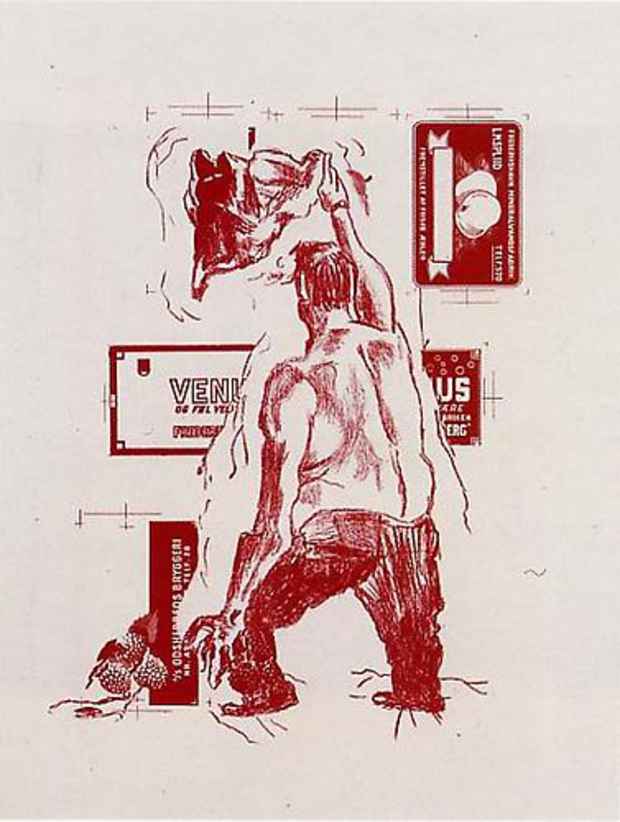Martin Kippenberger "The Raft of the Medusa"
Carolina Nitsch Project Room

This event has ended.
Carolina Nitsch presents the exhibition Martin Kippenberger: The Raft of the Medusa. This show comprises the complete portfolio of 14 lithographs as well as a selection of drawings and collages.
Martin Kippenberger completed The Raft of the Medusa portfolio in 1996, along with 24 paintings on the same theme, only a year before his death at the age of 44. In these prints Kippenberger cast himself as various figures in the famous painting of the same name by Théodore Géricault. Géricault’s massive canvas, completed in 1819, is an icon of French Romanticism, and depicts the tragedy that took place in 1816 when a French Royal Navy frigate ran aground off the West coast of Africa. Due to the shortage of lifeboats, 150 of the ship’s less well-off passengers hastily built a raft measuring 20 x 60 feet and were set adrift for 12 days. When they were rescued only 15 remained; the others died of starvation, were killed or thrown overboard, or threw themselves into the sea in despair. Géricault conducted extensive research on his subject by interviewing survivors, making preparatory sketches from subjects at a morgue and creating a scale model of the raft. Similarly, Kippenberger enlisted his wife and photographer Elfie Semotan to document him posing as the tortured subjects in Géricault’s painting, which he used as reference for the lithographs and paintings. One of the prints also illustrates a segment of the raft and Kippenberger even had a carpet woven with a diagram of the raft.
Kippenbergers project is, in some way, homage to Géricault and the 19th century studio practice, but also an irreverent parody. Kippenberger was widely known to be a restless, extreme character, working and partying excessively, and able to consume astounding amounts of alcohol. Werner Büttner, a painter and friend, called Kippenberger “a virtuoso at giving offense.” In two of the prints Kippenberger is reenacting the role of the pinnacle character in Géricault’s painting who is waving a cloth to get the attention of a ship in the distance. However, Kippenberger depicts himself in the same pose in front of a background of appropriated alcohol labels - is he vying for the attention of an audience or just careening in stupor? Even his body, atrophied and bloated, is in stark contrast to the emaciated, dying victims in Géricault’s painting. Many of the prints, though, appear to be an honest reverence to Géricault’s subjects, alluding to and psychologically embodying their harrowing ordeal and suffering. One can’t help but notice Kippenberger’s reenactment as foreshadowing his own death one year later.
Géricault’s masterpiece was intended to be both politically and artistically provocative and was indeed received as such at the 1819 Paris Salon. Likewise, Kippenberger was an iconoclast while remaining keenly aware of his context in western European art history. He executed many works which engage and destabilize German history and identity by exploring cultural hypocrisies and contradictions. Kippenberger was fond of skewed aphorisms and the title of his last poem, written shortly before his death, perhaps best encapsulates his life and “The Raft of the Medusa” in particular: “Never give up before it’s too late.”
Media
Schedule
from May 04, 2012 to June 23, 2012